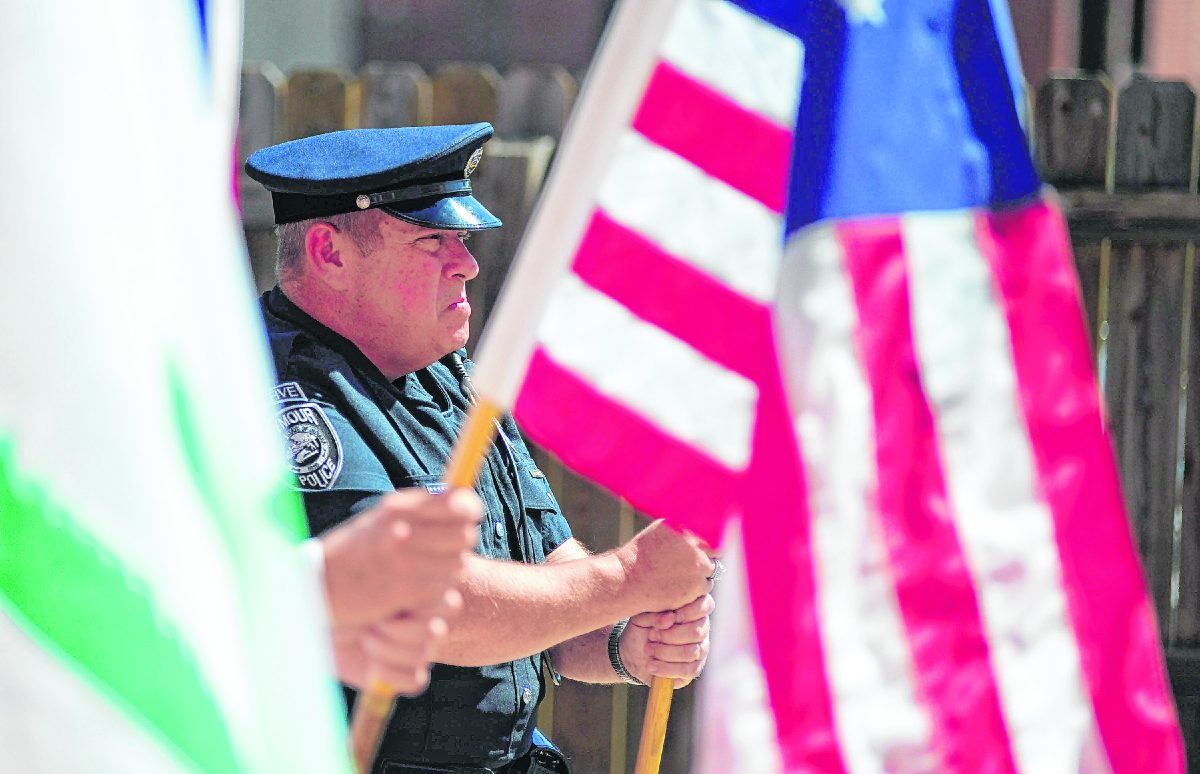
Harry Knight took a few steps back from the American flag, put his hand to his forehead and gave a salute.
He had just presented the flag to be raised as part of the closing of the Seymour Elks Lodge 462 annual Flag Day program Friday morning.
The program included prayer, the Pledge of Allegiance, the National Anthem and the history of the American flag. The holiday commemorates the adoption of the flag of the United States on June 14, 1777, by resolution of the Second Continental Congress.
[sc:text-divider text-divider-title=”Story continues below gallery” ]Click here to purchase photos from this gallery
It was a great opportunity to honor Old Glory, Knight said, but it was his previous role in displaying the American flag that drew far more attention.
Don Hill, who presented the program at the Elks, shared a story of a time when Knight was a government teacher at Seymour High School in 1979.
It was at the height of the Iranian hostage crisis when 52 American diplomats and citizens were captured and held for 444 days.
During Knight’s government class, students asked what they could do. A student then took the American flag and ran around the school, pulling it behind him.
That started an exercise of patriotism that lasted until the crisis ended Jan. 20, 1981.
Each day in the class at 10:55 a.m., a different student would run the flag around the school.
At one point, the school’s principal questioned what was happening but allowed it to continue.
When word came that the hostages had been released, the whole school looked to one person to run the flag a final time: The teacher who was responsible for continuing the tradition.
But this time, Knight was not alone when he ran throughout the school, Hill said.
“Mr. Knight ran two laps around the building with 1,300 students and faculty running behind him, cheering him on,” he said. “That’s Americanism as its best.”
Knight remembers the moment as a moving one.
“I had tears in my eyes,” he said. “I’ve been involved in a lot of things over the years, but that was the most emotional thing I’d ever seen.”
That emotion comes when he thinks about how his father served in World War I. Knight himself served in the National Guard.
He thought about those sacrifices as the Elks Honor Guard presented the history of eight different flags representing the evolution of the American flag, starting with the yellow rattlesnake flag from 1774 featuring the motto “Don’t Tread on Me.”
It was followed by the pine tree flag, which was carried by the continental forces in the Battle of Bunker Hill.
On June 14, 1777, the United States adopted the flag by resolution of the Second Continental Congress. At that time, it featured 13 stars and 13 stripes — one for each of the original colonies. Two more stars and stripes were added in 1795 for Vermont and Kentucky.
But that was later changed back to 13 stripes and one star for each new state, leading up to the present 50.
Other flags included the Grand Union flag, the Betsy Ross flag and the 15-star, 20-star and 48-star flags.
Knight credited his students with the drive to make sure the school recognized the crisis and a little bit of American pride 40 years ago.
“It was more the students than me because they thought it up on their own,” he said. “It was something to see.”
